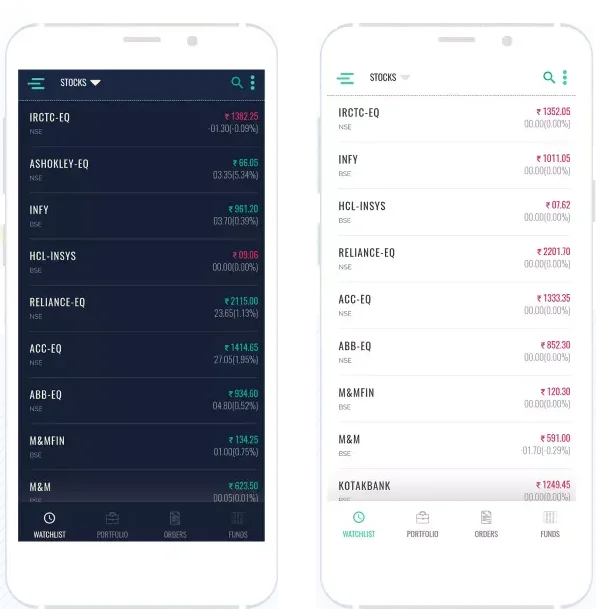Knowing About the Fund Performance

In the previous chapter, we learnt about risk – how important it is to define risk appetite before planning ahead. We saw the benefits it offers us and learned about various risk profiles based on which a suitable mutual fund can be picked. The next step is to evaluate the fund based on its performance. This is exactly what we will focus on in this chapter. We shall look into how we can analyse a fund’s performance in order to make a decision whether to invest in the same or not.
Before we begin, let us imagine a scenario. Suppose 10 years down the line, Ranjit (Yes, that robotics guy) earns enough money to buy a vacation house in Goa. How do you think he will proceed with that? Will he just buy any house that he comes across since he has enough funds to buy? Absolutely, NO!
He will perhaps hire a broker and go through multiple options. After shortlisting a few options, he might consider visiting them all personally, assess the neighbourhood, check water and other facilities, house papers, and whether everything else about the property is in order. He might even go one step ahead and chit-chat with neighbours to find out if the property is worth the investment.
Similarly, before you invest in a mutual fund, you need to go through different options to pick those according to your requirements. Remember, just like all houses are not suitable for Ranjit’s vacationing purpose, all mutual funds are not suitable for all kinds of financial goals.
The best way to do this is by evaluating the performance of various funds that meet your financial goals and risk appetite. Out of different components that help you in analysing a mutual fund, a comprehensive study about its performance gives you an idea about how well the fund is doing. We all want to pick the best performing fund but how do you know if a fund is performing well?
Let us dive into the topic by starting to know what funds performance is.
Funds’ Performance
A fund’s performance is basically all about how much return the fund generates on an annual basis and what is the cost of earning that return for an investor. This net return on the fund should match with the expected return that the investor is seeking to meet their financial goals. But analysing the past data of the fund is one thing and considering the risk adjusted future returns net of charges is another. Evaluating a fund involves a comprehensive analysis including past performance and future projections.
Therefore, you must include fund performance analysis in the process of picking the right fund. Before we begin knowing about the fund performance, let us look at the significance it holds in our financial planning.
Why Analyze a Fund's Performance?
In the field of finance, there is no such thing as ‘invest and forget’. Every type of investment asset needs some kind of reevaluation and analysis to find out if the fund’s performance is still in line with your goals. Therefore, it becomes important to analyze a fund’s performance not only at the time of investing but also from time to time while you are invested. Let us also glance at the below mentioned importance of fund performance analysis.
- To Make the Most Out of Risk: As risk is an inevitable factor in the stock market, mutual funds returns will always remain subject to the market risks. But, on the other hand, return on funds are more rewarding than return on other assets. Hence, evaluating a fund on the basis of risk-reward is important to make the most out of these types of investments.
- To Compare With Other Investment Options: Not all funds deliver consistent rewards at all times. The risk and reward of funds keep fluctuating and you need to assess if the fund is still performing better or there is another fund that suits your needs more aptly.
- To Rebalance In the Ever-changing Market Scenarios: Every economic event has the potential to change the stock market’s trajectory. With so many uncertainties around the economic environment, it becomes crucial to evaluate a fund’s performance oftentimes to ensure there is balance between investor’s risk appetite and the fund’s risk.
How to Evaluate a Fund's Performance?
Now that you understand the importance of knowing about the fund’s performance, let us guide you through the ways in which you can do the evaluation.
- Comparison with Benchmark: This must be your step one in the process of fund evaluation. If the fund frequently outperforms the benchmark, then that fund is the best of the lot. The extra return that the fund bags in for you over and above the benchmark, that extra return is termed as ‘alpha’. So the higher the alpha of a fund, the better the performance.
- Comparison with Peer Funds: This step can be done along with the fund’s comparison with the benchmark. Naturally, in the list of all the available options, the one who’s alpha is higher becomes the better option. But it is always important to compare performance between two funds that are alike. Matching with different types of funds will not give the right results. For example, comparing equity growth fund with debt income fund will give incorrect analysis.
- Expense Ratio and Other Charges: The asset management company charges you certain fees for maintaining your portfolio. It is called expense ratio. If the expense ratio is on the higher side, you end up paying a higher percentage of your returns towards maintenance charges. You must compare the expense ratio of various funds along with the return on investment they offer.
- Comparison with Index: The performance of indices like Nifty and Sensex portray the overall state of affairs of the economy. Comparing funds’ returns with that of indices tells you if the fund’s performance is in line with the economy or not.
Let us consider the following hypothetical example to understand better.
| Year | Nifty50 | XYZ Growth Fund |
| Year 1 | -8% | -12% |
| Year 2 | 15% | 12% |
| Year 3 | 20% | 23% |
The XYZ Growth Fund is said to have positive alpha in the third year when the benchmark index gave a return of 20% whereas the mutual fund returned 23% on the capital.
- Reviewing the Risk: The best way to evaluate returns based on the risk taken to achieve them is to review risk adjusted returns. It can be done using Sharpe Ratio or Teynor’s ratio. These ratios use beta factor or risk free rate of return to analyze fund performance. The higher the ratio, the better the fund’s performance.
Here’s an example of two mutual funds to help you understand Sharpe Ratio’s application better.
| Particulars | Mutual Fund 1 | Mutual Fund 2 |
| Return on Investment | 15% | 12% |
| Risk Free Return | 4% | 4% |
| Standard Deviation | 5 | 6 |
| Sharpe Ratio | 2.2 | 1.33 |
Sharpe Ratio is computed by using the following formula:
(Return on Investment – Risk Free Return) ÷ Standard Deviation
If the Sharpe Ratio is less than 1, then the fund is considered bad. Ratio more than one up to 1.99 is good. From 2 to 2.99, the fund is considered very good. Funds with Sharpe Ratio of 3 or more are considered excellent.
In the above example, Mutual Fund 1 is better than Mutual Fund 2 as the Sharpe Ratio is higher.
These are some steps following which you can evaluate the funds before picking one or in case you have already invested, you can evaluate it to ensure that the purpose for which you have invested is being served well.
In nutshell:
- Fund’s performance is measured in terms of risk adjusted net return it delivers after all the charges in comparison to that of similar funds.
- It is important to evaluate funds to make a decision whether to invest or not. As the market scenarios change, evaluation helps in better comparison with other similar funds.
- Performance of the index, expense ratio and risk adjusted return are some of the important components you must consider while evaluating a fund.


How Would You Rate This Chapter?
Next
Comments (0)